Each year students from a variety of studies work together in the interdisciplinary Formula Student Team Delft (previously known as DUT Racing team) to design, build and race an independently designed and manufactured car to compete during the annual Formula Student competition.
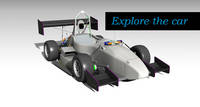
More about FST Delft
Educate yourself: Course Materials for free
This not only leads to a competition winning machine: the racecar provides a very tangible showcase of the engineering skills needed to design and build a racecar. Now you are able to follow recorded lectures and courses taken by the DUT Racing students yourself, for free, and learn about the scientific backgrounds of elements applied in the racecar, like chassisbuilding (including ergonomics), vehicle dynamics, power train, electronics and Aerodynamics.
Additional information about design choices in Formula Student Racing
Additional reading about DUT and their design choices during the different builds can be found in their DUT Newsletters.
Chassis
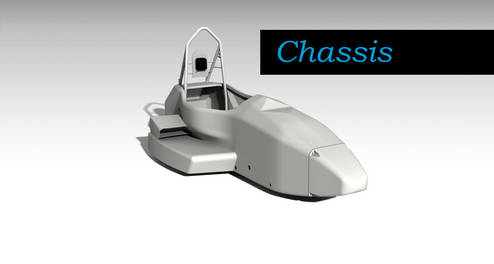
The Chassis is a vital component of a race car. It accommodates and shields both the driver and the electronics used in the race car and serves as the mounting structure for all of the car’s components. The DUT race car has some nice ergonomic features built in to ensure optimal performance and comfort. The Monocoque is custom made to match the specifications from the regulations and influenced by the necessary ergonomic design features. Learn more about the engineering behind the design and educate yourself by taking the free online lectures found on this page, taken from courses taught at TU Delft.
Ergonomics
One of the most important design aspects is to accommodate the driver and ensure his safety. Of course the driver has to sit comfortably, safely and have a clear line of sight. To optimally accommodate the driver the cockpit, steering wheel and seat are optimized for the drivers body dimensions. But getting the ergonomics right is actually a tricky aspect of designing the car, since it has to fit a variety of different sized drivers.
Elementary Ergonomics is one of the courses in which TU Delft students are educated in ergonomics. Check out the introduction video below, in which the DUT racing car features as a case study.
The course ‘Elementary Ergonomics’ is taught by assistant professor Iemkje Ruiter at the faculty of Industrial Design Engineering.
Monocoque
The monocoque is the main body of the car (as a load bearing structure) to which the suspension and powertrain connect and it is the bodywork that accommodates the various components are integrated. This integration of the functions of chassis and bodywork in a single monocoque results in better performance because this makes the race car is lighter, stronger, safer and more aerodynamic.
However, this also poses a number of engineering challenges: Which materials will you use to construct a monocoque? How do you find the optimum balance between weight and rigidity? And what are the loads put on the monocoque when the car is accelerating, cornering or braking?
The course ‘Dynamics and Stability’ will introduce to you calculations of the different loads placed on the monocoque, in various situations. Once you know which forces to take into account, our Dutch course on ‘Materiaalkunde‘ (Materials engineering) will teach you about different materials and their suitability for a particular use. You should also take a look at the Related Courses page.
-
Aerospace Engineering (Bachelor) (1)
-
Dynamics and Stability
Program(s) Bachelor
Project(s) Formula Student Team Delft
-
-
Industrial Design Engineering (Bachelor) (1)
-
Elementary Ergonomics
Program(s) Bachelor
Theme(s) HealthInfrastructures and Mobility
Project(s) Formula Student Team Delft
-
-
Mechanical Engineering (Bachelor) (1)
-
Vehicle Dynamics
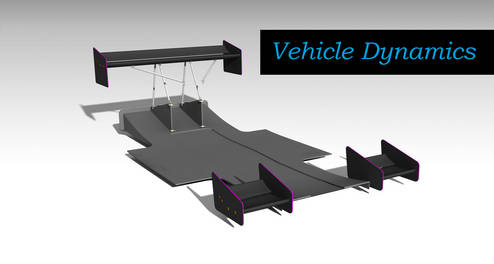
The DUT racecar wouldn’t get far without a vehicle control system. And you can imagine that a suspension system and a brake system are just as vital in a record breaking racecar. The DUT Racing team added special aerodynamic features this year. You can learn more about these elements by following the lectures and courses listed.
Control Systems and Dynamic Modeling
We all know technologies like ABS, ESP and Traction control. But that’s not all the DUT Racing put into the DUT racecar. For students it is important to study courses like Vibrations and Statics to master vehicle Dynamics. You can too! Watch lectures on these subjects online, for free.
-
Mechanical Engineering (Bachelor) (1)
-
Powertrain
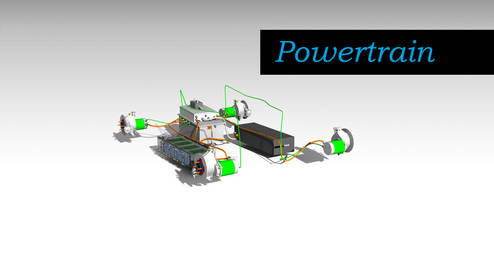
The powertrain forms the heart of the DUT race car. Without it, it doesn’t move. But obviously there’s more to it than that, find out the details on this page.
Cooling System
When generating power, heat is released. The motor needs to be cooled to keep it functioning properly. The DUT racecar uses water cooled electrical engines. You can learn more about cooling systems by watching lectures of our ‘stromingsleer‘ course (Dutch).
Motors and Motor Controllers
The DUT racecar is powered by AC Motors. Sounds easy, but it isn’t. Learn about the electric motors used in the racecar by taking classes about Electrical Machines and Drives and Electronic Power Conversion to study how the motors convert electricity into mechanical rotation.
Battery Pack
An electric car obviously has to have a way to store energy. This is done in the form of chemical energy in the battery pack. Learn more about the use of this battery pack by studying the principles of energy storage in rechargeable batteries in the course Sustainable Hydrogen and Electrical Energy Storage
-
Electrical Engineering (Master) (1)
-
Electrical machines and drives
Program(s) Master
Project(s) Formula Student Team Delft
-
-
Electrical Engineering (Bachelor) (1)
-
Electrical Power Drives
Program(s) Bachelor
Project(s) Formula Student Team Delft
-
-
Mechanical Engineering (Bachelor) (1)
-
Electronics
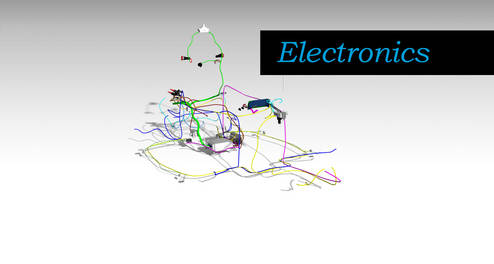
The Formula Student Team Delft racecar contains a lot of electronics. Of course, there are the motors, but don’t forget the battery packs, the dashboard, the brake light and all kinds of sensors that gather information about the car and its environment. All electronics should be controlled by something, some kind of ‘central computer’. In the DUT electric car, this is the ECU, the electronic control unit. You can learn more about the ECU hardware by watching lectures offered in the course System Validation.
-
Computer Science (Master) (1)
-
System Validation
Program(s) Master
Project(s) Formula Student Team Delft
-
Aerodynamics
One of the features the DUT Racing team added to the DUT racecar pays special attention to aerodynamics, creating downforce and making the car faster! Below you’ll find two lecture recordings on Aerodynamics, which are part of our Racecar Aerodynamics course.
-
Mechanical Engineering (Bachelor) (1)
-
Related Courses


Materials Engineering
Learn about material characteristics and how to deal with them in engineering applications. (Dutch Course)

System Validation
Learn how to specify the behavior of embedded systems and experience the design of a provably correct system. Learn how…

Statics
Study principles of equilibrium, forces and moments and concepts like the centre of gravity, centroids and moments of.

Sustainable Hydrogen and Electrical Energy Storage
Energy storage will be of major importance when more and more energy is produced using fluctuating renewable sources…

Electronic Power Conversion
Learn how power electronics are applied, get an overview of power electronic circuits and learn how to analyse circuits.

Electrical Machines and Drives
Get an overview of different types of electrical machines and drives, mechanical loads, DC machines, induction…


Electrical Power Drives
Understand mechanical system requirements for Electric Drive, passive network elements, phasors for simple R, L, C…



